Are you one of those who wish to have a pincushion cactus and still wondering what variety you should grow; if so this article is for you as we are going to cover the most important and famous pincushion cactus varieties.
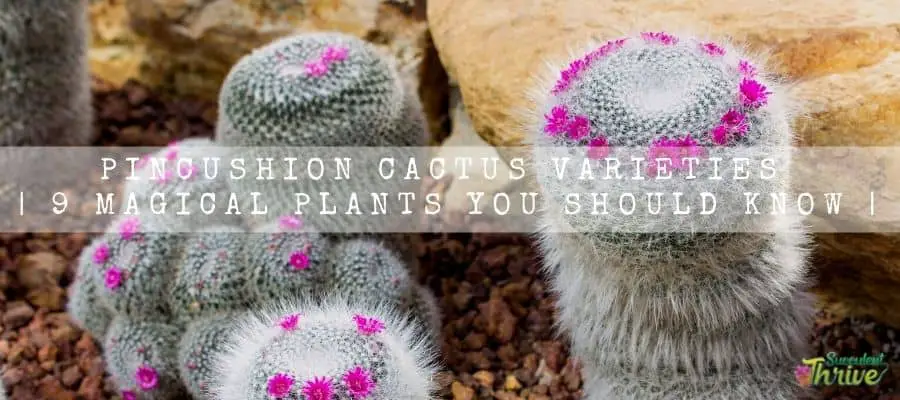
What is pincushion cactus?
Pincushion cactus belong to the family Mammillaria, and it consists of about 250 species of the cactus.
You could find some interesting names for some of these species. They are such as giant snakes, and crawling log cactus.
On the other hand, there are pincushion cactus species called snowball cushion cactus which tend to take a ball shape.
If we take a cactus like an old lady, it is a solitary cactus which generally has white fuzzy hairs which almost look like spines.
Besides that, there are cacti such as powder puff cactus and rose cactus also available and the list goes on.
To briefly explain to you about the Pincushion cactus in general, they are a tiny little set of plants. Their maximum height would not exceed more than 15 cm.
They could tend to look like a ball or even a barrel. These plants are endemic to warmer parts of America.
This is a quite famous plant which many people tend to grow as indoor houseplants. Having said that, they could also thrive well outdoors as it could withstand some cooler temperatures as well.
These cacti have inherited this name simply because white spines have covered the whole plant. It is prickly.
So I would recommend you to wear thick gloves when interacting with this plant so that you could protect yourself.
Caring for the pincushion cactus is easy and even a fresher in gardening could grow them without any hassle.
Populer Pincushion varieties
Mammillaria bocasana (Powder Puff Pincushion)
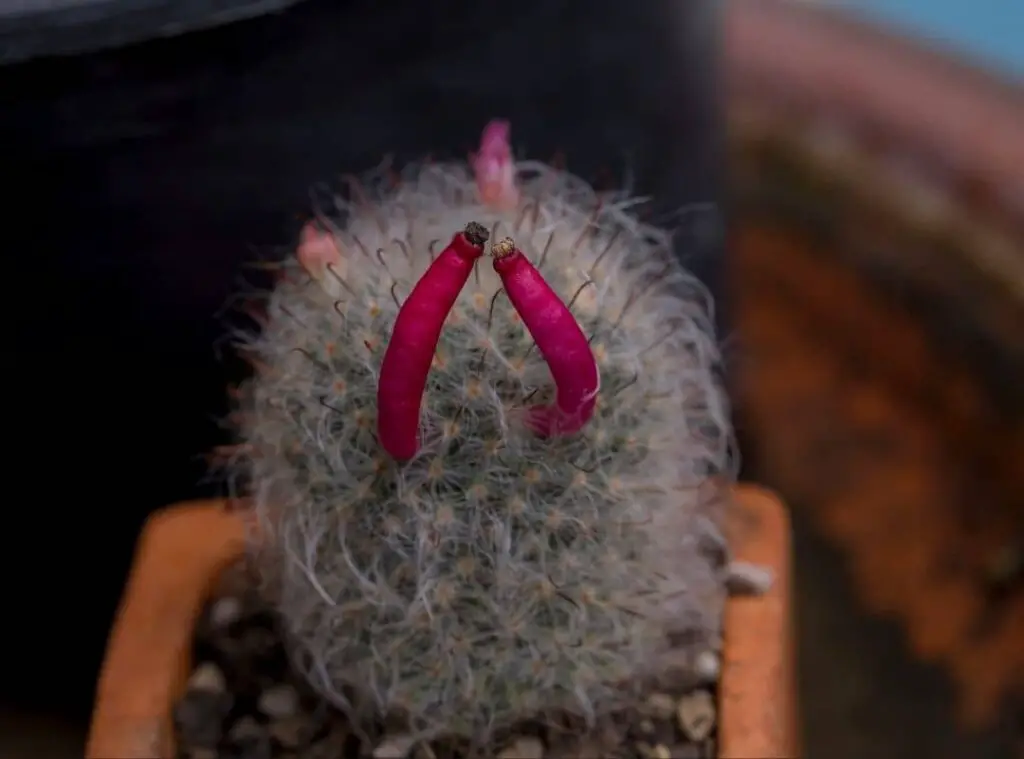
Powder puff pincushion plants are native plants in Mexico. This is more like a clumping cactus which tends to form in large mounds too.
They usually look like a cotton ball; thus, they have inherited the name called powder puff cactus. Further it has white hairs covering its body too.
Mammillaria Bocasana is what you could call them scientifically. They usually consist of spherical stems as well. Having said that, there could also be cylindrical shaped stems as well.
They produce white creamy yellow colored funnel shaped flowers during spring and in summer seasons. They would further consist of flower buds in pink.
Mammillaria spinosissima (Spiny pincushion cactus)

Mammillaria spinosissima is the scientific name of these plants. These plants are endemic plants in central Mexico.
Their natural habitat would usually be dry forests in those areas. This is a plant which you would commonly find in nurseries.
They would tend to grow in clusters as they mature. Stem of these plants would be cylindrical in shape and dark blue green in color.
You could further spot them with densely covered hairs as well. They would produce flowers in purple or in deep pink colors.
They would flower in Spring and you could spot those flowers forming in the upper part of the plant.
Mammillaria Bombycine (Silken pincushion cactus)
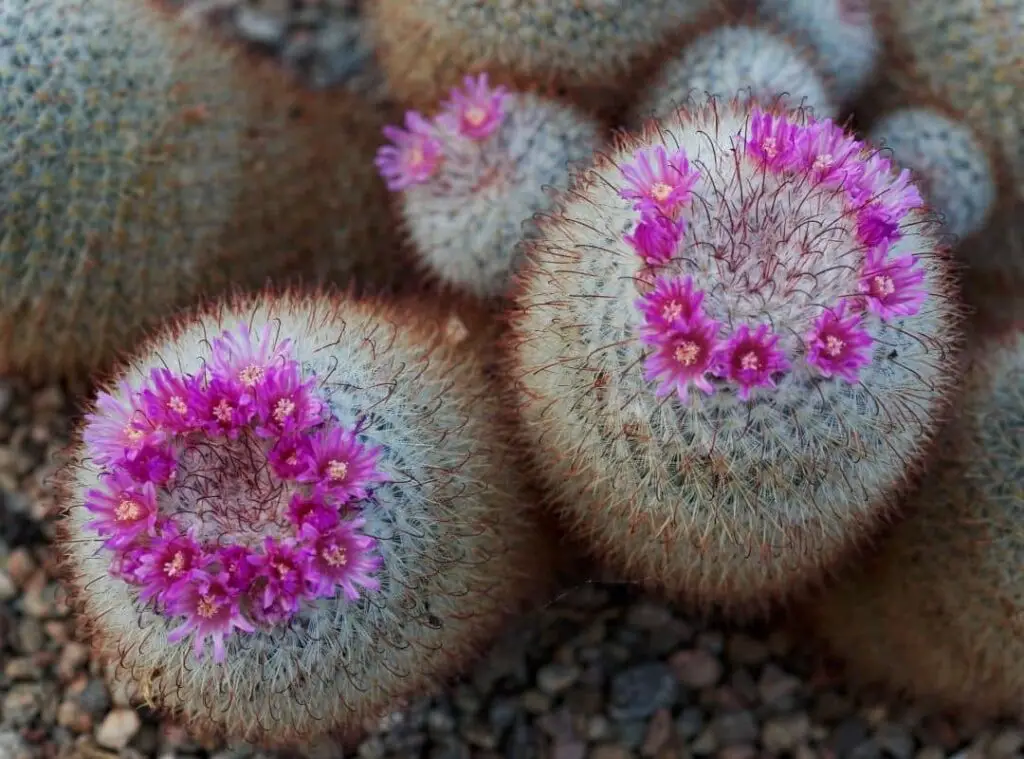
Mammillaria Bombycine is the scientific name of these plants. They are also native plants in Mexico, and you could mainly spot them in high mountain areas, forests of those places.
It was illegal to collect these plants in the past. However, you could obtain these plants from propagation.
Their stems would be gray green in color, and they would comprise with white hairs as well. In addition to that, they will consist of short spines too.
When it comes to flowering of these plants, they would be light carmine, pink or white in color. You could spot them flowering only on their matured plants and spring would be their flowering season. Flowers would be circular shaped.
Mammillaria microcarpa (Strawberry pincushion cactus)
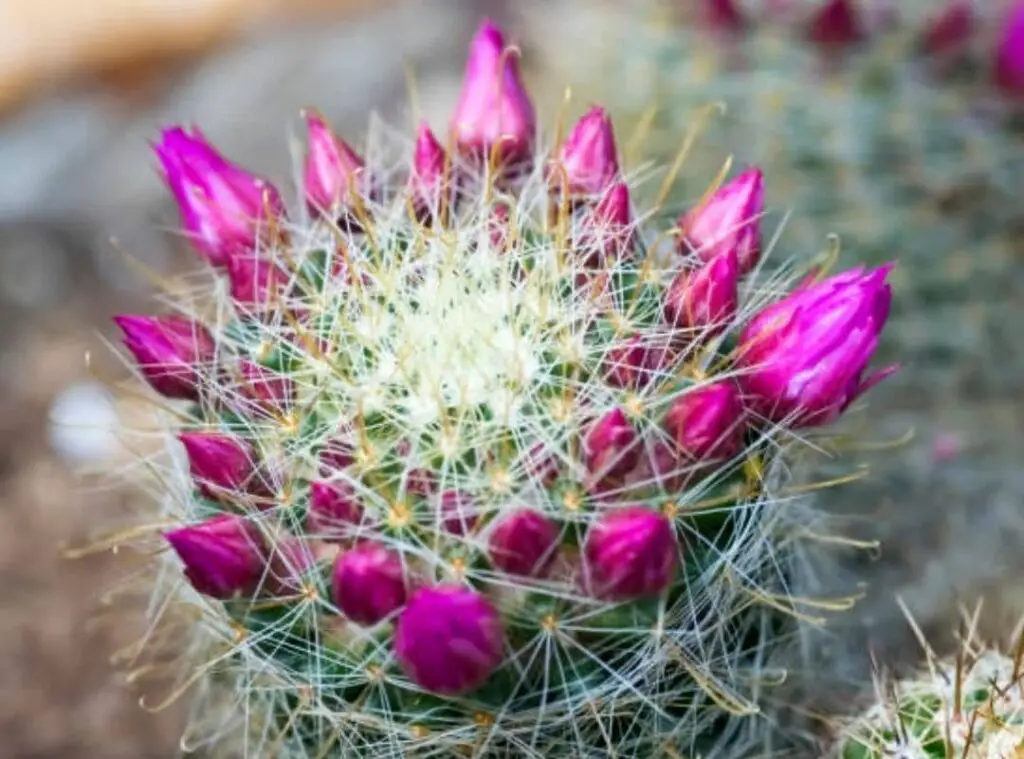
Mammillaria microcarpa is what you could call these plants scientifically. You could mainly spot them growing in gravelly slopes and in rocky ridges as well.
Strawberry Pincus on cactus are also endemic plants in Mexico. They tend to make clusters when growing.
On the other hand, they would have thickened roots. Stem of these plants would be globose conical to short cylindrical and light green in color.
They would further produce blooms in pink, purple or even in white colors. They are funnel shaped.
Mammillaria dioica (Rainbow pincushion cactus)
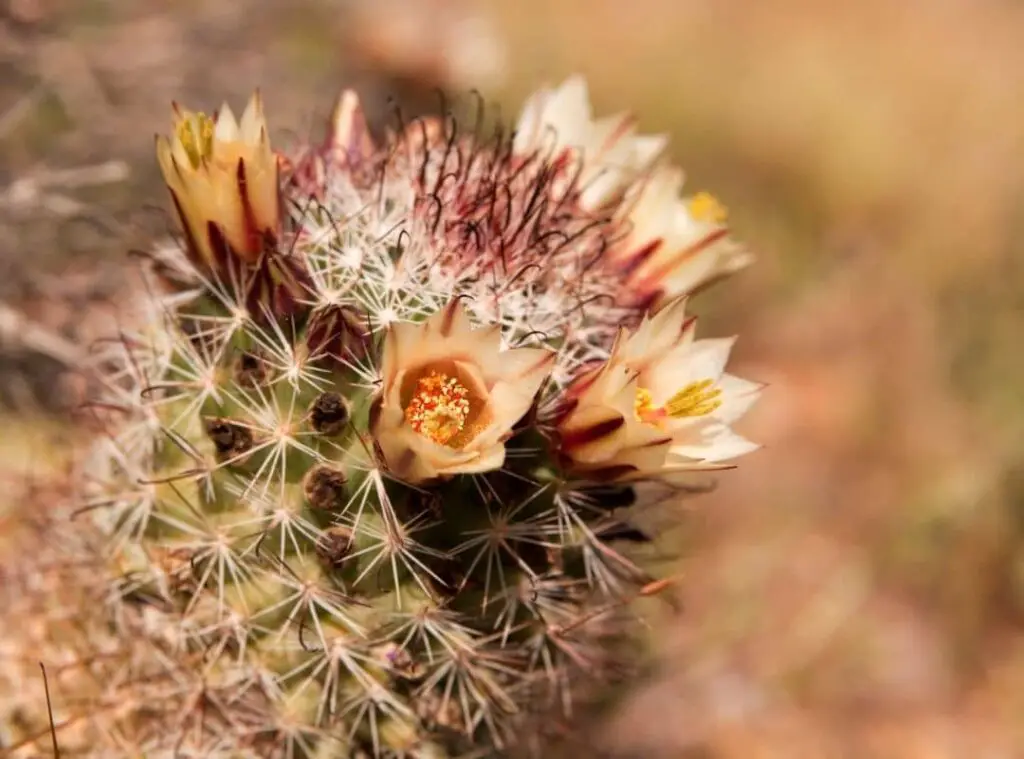
Rainbow pincushion cactus scientific name is Mammillaria dioica. They are native plants in America and in Mexico as well. gravelly slopes are usually their natural habitats.
This is more like a spiny cactus which blooms quite often. They will come up with several stems as well.
Having said that, they will have solitary stems too. in terms of the body of the plant it would tend to take a spherical to long cylindrical shape.
It could be blue-green in color. When it comes to flowering, they would make flowers in yellow, white, pink or in purple colors during late winter or in late spring.
Mammillaria baumii (Golden pincushion cactus)
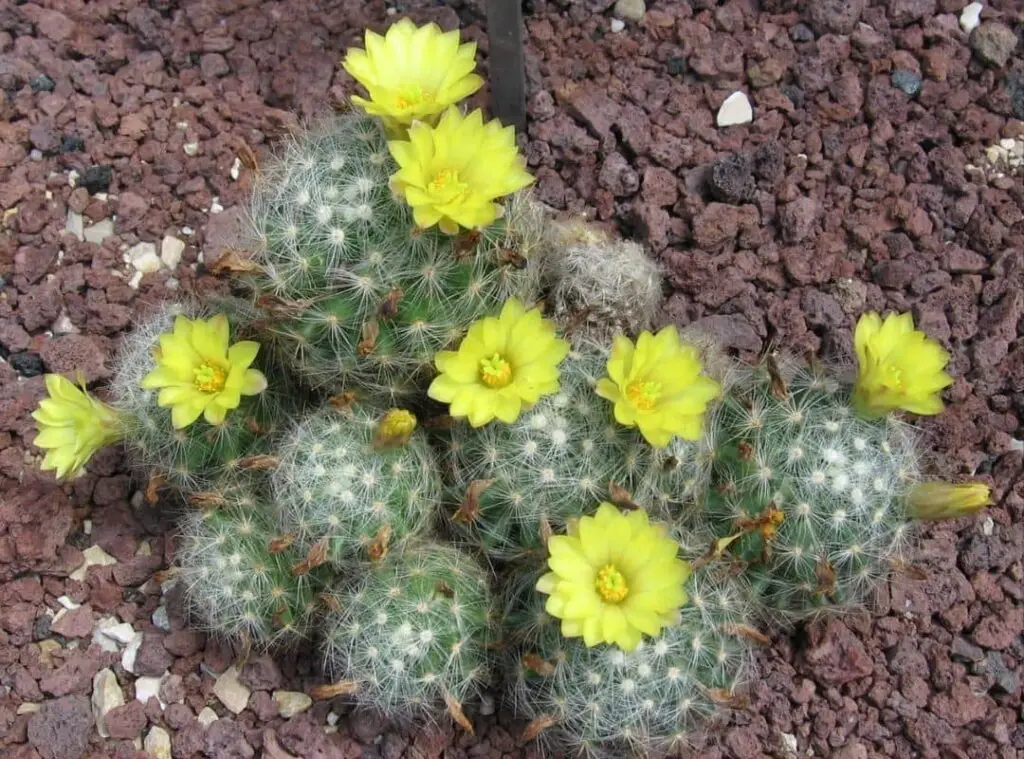
Mammillaria baumii is the scientific name of these plants. They also tend to grow in clumps. Usually, they are a low growing set of plants.
Moreover, they would consist of densely grown spines. When it comes to flowering, they produce flowers in golden yellow color.
Apart from that they would be funnel shaped as well. Not only that but also, they carry a sweet fragrance too.
Mammillaria hahniana (Old Lady)
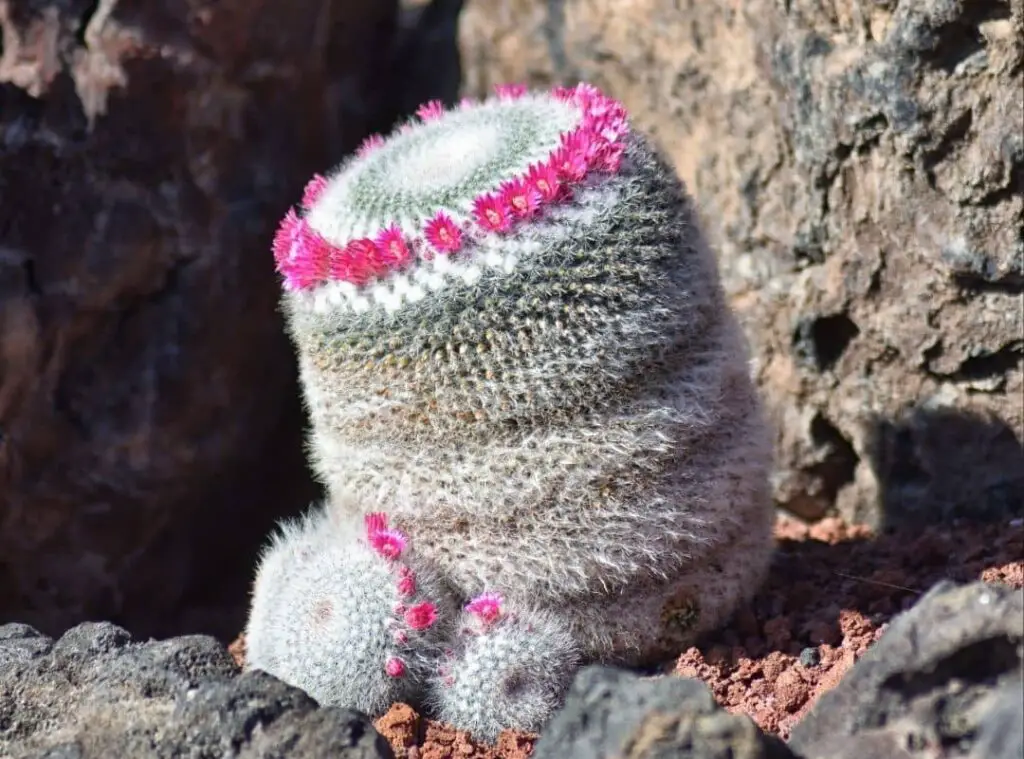
Mammillaria hahniana is the scientific name of the old lady plants. These plants are also native in Mexico. Sleep slopes and deciduous forests are their natural habitat.
This is regarded as a threatened species simply due to the limited range they have and due to a lot of illegal collection as well.
They consist of long white slender and flexible hairs which would be helpful to enhance the thickness of the plant.
Stem of the old lady plants would be globular at the initial stage and cylindrical as they mature. Stem color would be light green to gray green.
They would produce flowers in violet red to pink flowers during late winter to spring seasons.
Mammillaria nivosa (Woolly Nipple)
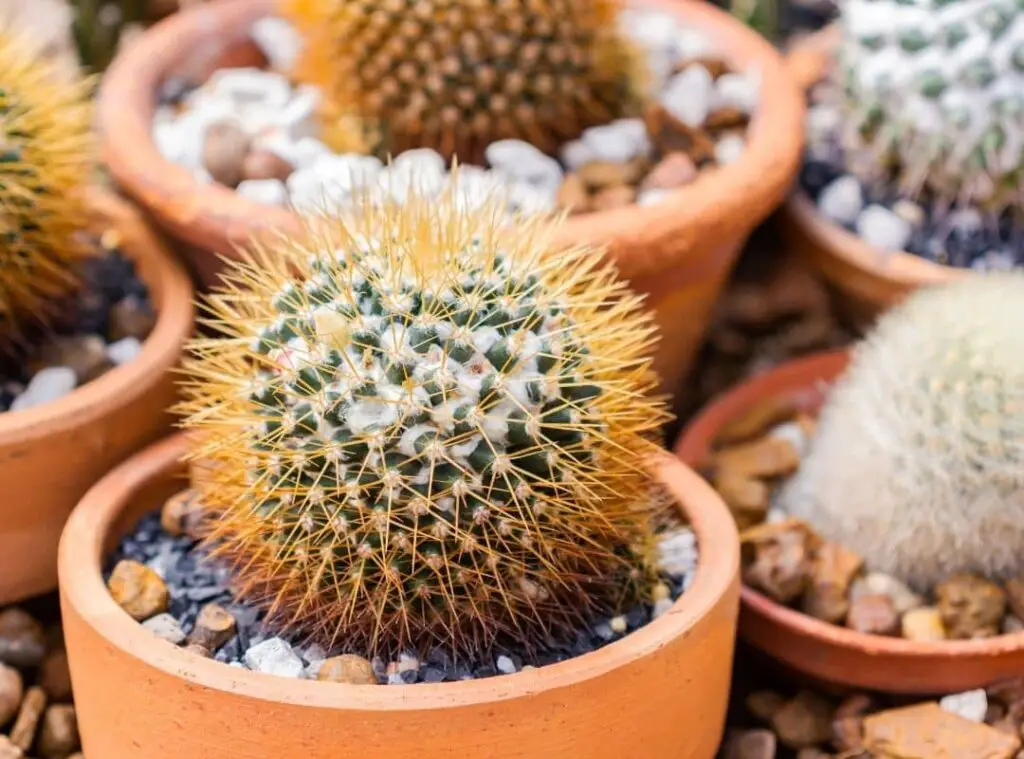
Woolly nipple’s scientific name is Mammillaria nivosa. They are native plants in Caribbean Island and in the Bahamas. This is a colorful cactus species.
They tend to grow as solitary plants but would make so many offsets. They tend to grow in a mat forming manner as well.
Woolly nipple stems would be globose to short cylindrical in shape. In terms of colors, it would be dark green to bronze.
They would produce flowers in yellow color, and you may spot them flowering in the early spring season.
Mammillaria parkinsonii (Owl’s eyes)
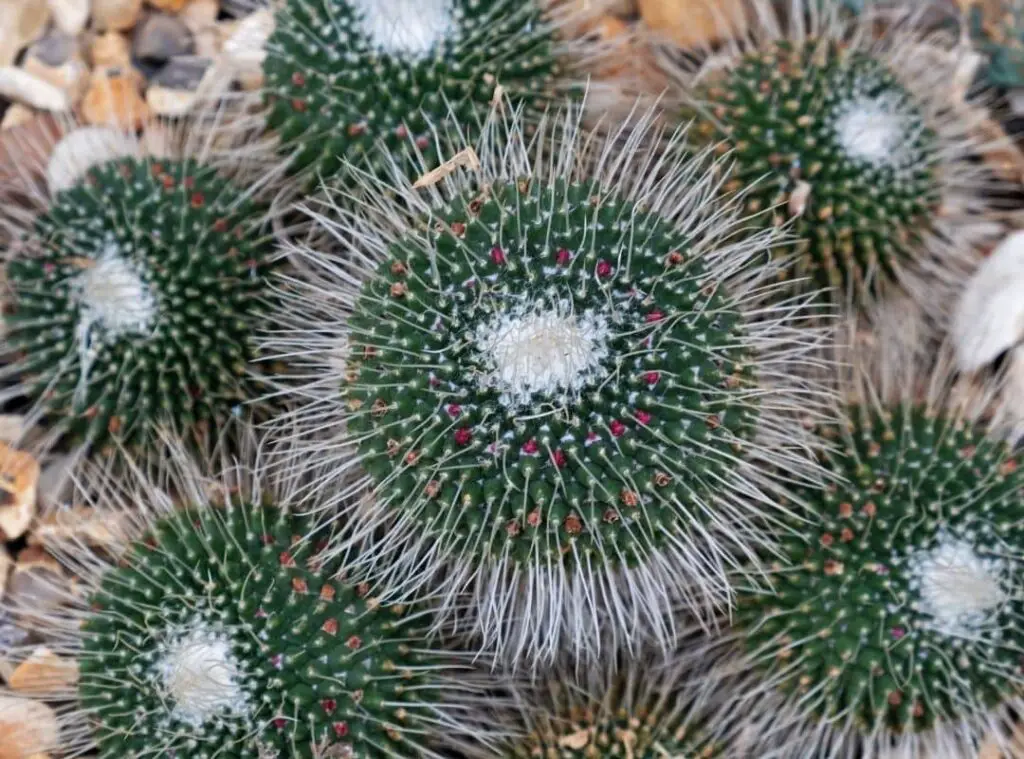
Mammillaria parkinsonii is what you call them scientifically. . They are also endemic plants in central Mexico. They would tend to grow well in desert areas in those countries.
Many people tend to use this as an ornamental plant. You could easily propagate them as well. They are woolly-type plants which form mounds as well.
Stem of these plants would be green in color and short cylindrical in shape. In terms of flowering, they would produce pale yellow, colored flowers.
Those flowers would be funnel shaped too. Further you could spot their flower buds have been covered by a mass of white wool.
How to treat pincushion cacti
Watering
In terms of watering these cacti, it is best to always check whether the top layer of the soil is dry and only then water.
In case you are unsure, it is always better to go underwater than over water them.
That is because over watering could cause major repercussions than what you do with under watering.
You could always revive the plant when you are under water. On the other hand, it is very unlikely that you could save the plant if root rot occurs from over watering.
So, when watering them, always make sure that the soil is completely dry from the previous watering and let them become dry in between two watering sessions.
Further when you water, do it thoroughly. Do not leave the plant stranded in soggy conditions.
During the winter season, pincushion cactus would go into dormancy. As such you may cut back on watering them during this season.
Having said that, if by any chance you see that your cactus seems to be dry, you could consider misting them lightly periodically.
Lighting
Even though I mention pincushion cactus as an easy to care plant, it is so crucial that you provide adequate sunlight for their vigorous growth.
They are fond of strong light and would even love to have bright sunlight for several hours per day.
When you are growing them indoors, you need to ideally place it on a windowsill where they could gain enough sunlight. If you wish, you could grow them outdoors during summer.
Alternatively, you need to make sure that they get at least eight hours of sunlight.
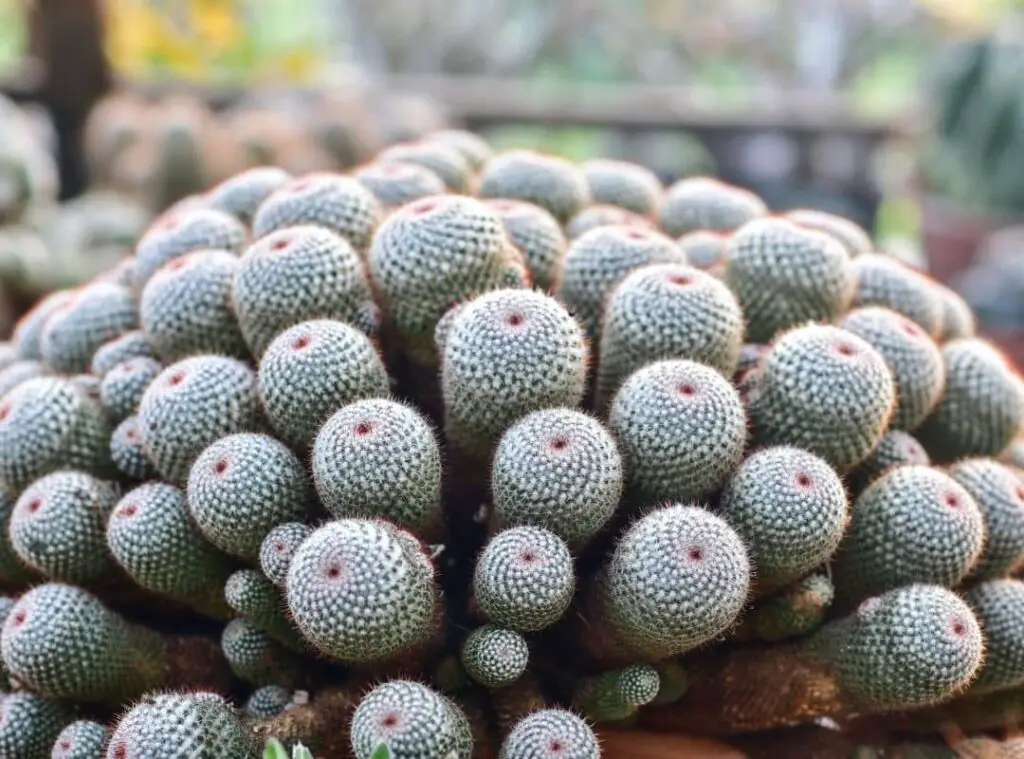
Temperature
They would love heated weather conditions and would prefer to grow under temperatures between 70 degrees and 80 degrees Fahrenheit.
During the winter season, you could decrease the temperature to 60 – 65 degrees Fahrenheit. That would stimulate the flowering of the cactus as well.
Soil and pot
Draining is the most crucial factor when it comes to selecting the right soil mix just like the other cactus or succulents.
Best is to use a cactus mix or a succulent mix which includes coarse sand and perlite, which would be beneficial to fasten the drainage.
When it comes to selecting the right pot, make sure that you’re using a pot which has adequate holes at its base so that excess water could move through.
Ideally you should use a clay or terracotta pot which would not retain extra moisture.
Fertilizer
You may add a liquid fertilizer which is specially designed for succulents and for cacti during the summer season.
Summer is their active growing season and hence why you need to feed them during this time. During their winter dormancy, refrain from feeding them at any given point of time.
Conclusion
Despite the fact that there are several pincushion cactus varieties you could always grow all of them successfully without any failure.
Only thing you need to keep in mind is to locate these cacti properly during the winter season and cut back on watering. Further make sure that you are allowing them to rest well in their dormant period.
As long as you provide plenty of sunlight and heated temperatures, all of them will thrive well and chances are that they will reward you with attractive flowers as well.
In addition to the aesthetic beauty it has , it would add so much fragrance to your home as well.
As you may understand by now, there are plenty of options you can choose from to grow. Trust this article was helpful for you to identify the exact pincushion cactus variety you wish to grow.
So, enjoy growing them and I am sure all your efforts will pay off.
Read Next : Rat Tail Cactus Problems | 5 Common and Irritating Problems |
Read Next : Rat Tail Cactus Flowers | 11 Beautiful Flower Facts |
